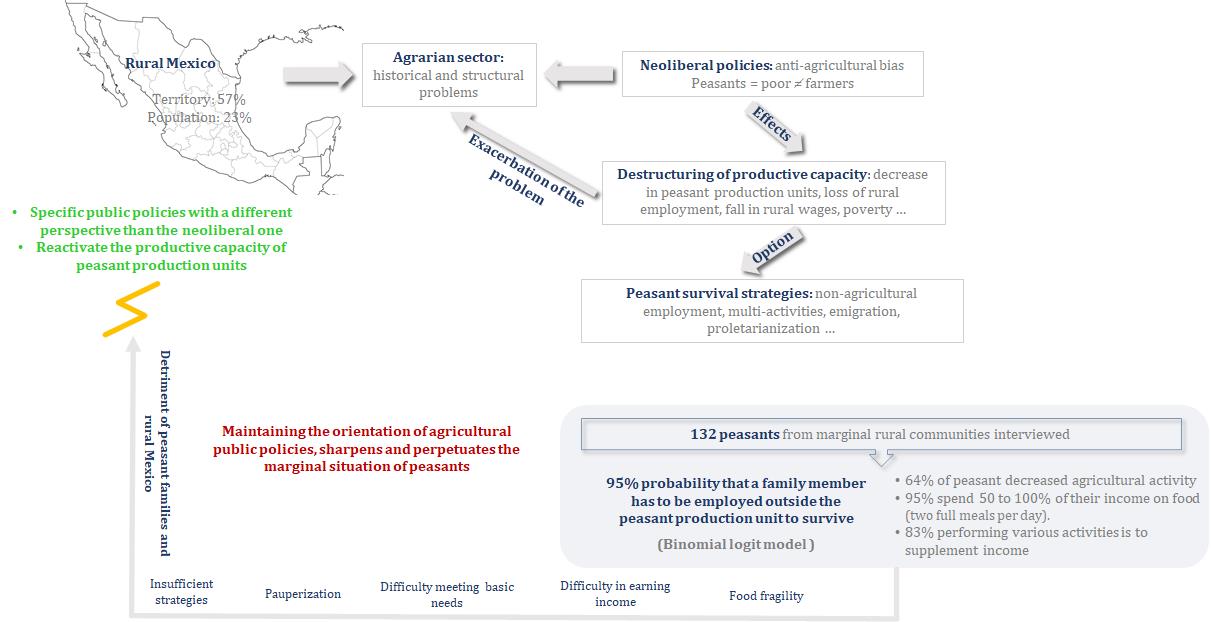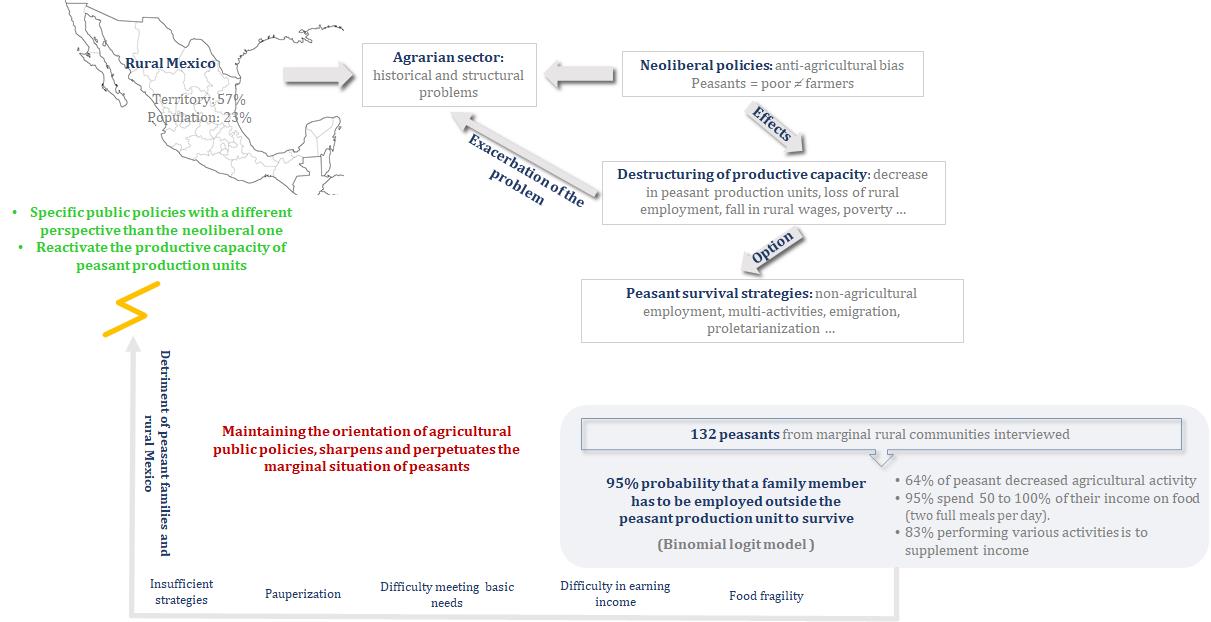The need for extra-agrarian peasant strategies as a means of survival in marginal rural communities in Mexico
Keywords:
peasant strategies, peasant production unit, non-farm income, Mexico, Agricultural communitiesAbstract

The Mexican agrarian sector is currently facing a series of structural problems that have a direct impact on the potential of agricultural activities that provide rural families with food and economic livelihoods, particularly to those living in marginal rural commu- nities. A total of 132 interviews were conducted with farmers from marginal commu- nities in central Mexico. From the total, 64.2% had decreased their agricultural activity in order to engage in other activities and increase their income. Ninety-four percent (94.7%) of families spend between 50 and 100% of their income on food. The binomial logit model determined that there was a 95.4% probability of a family member securing employment outside the peasant production unit. Despite this, family income does not cover basic requirements satisfactorily. In the current context, peasants are subjected to food poverty and income instability. As a result, they look for livelihood options outside the agricultural activities that only allow them to subsist. It is highly probable that peasant families will continue to implement a variety of survival strategies with increasing frequency, to the detriment of Mexican family units and rural communities.
Highlights
- The structural reforms conducted in the Mexican agrarian sector put at risk the life opportunities of small farmers.
- Peasants in marginal rural communities are forced to design survival strategies beyond agricultural activities.
- Factors related to the structure of the production unit, the characteristics of the head of the family, the production and destination of basic grains, and the government support payments, influence the probability of seeking employment outside the production unit.
- Complementary activities outside the peasant production unit do not enable small farmers to meet their food and other basic needs satisfactorily.
- It is necessary to advance in the design of more flexible and democratic public support schemes to address the specific problems presented by Mexican small farmers and peasants.
Downloads

Published
How to Cite
Issue
Section
License
Aquellos autores/as que tengan publicaciones con esta revista, aceptan las Políticas Editoriales.










.jpg)




